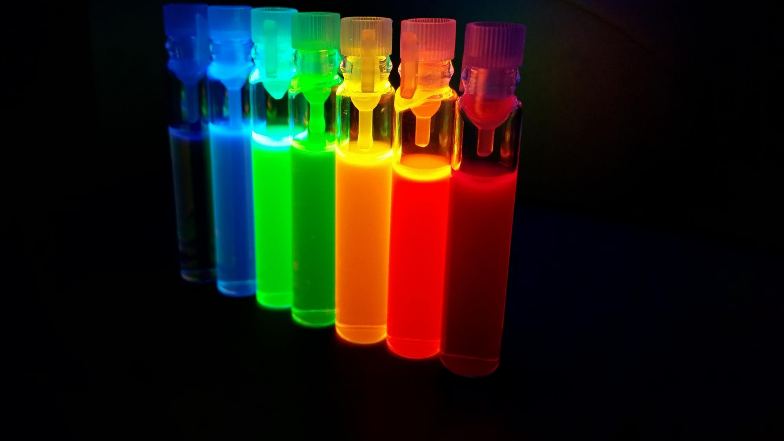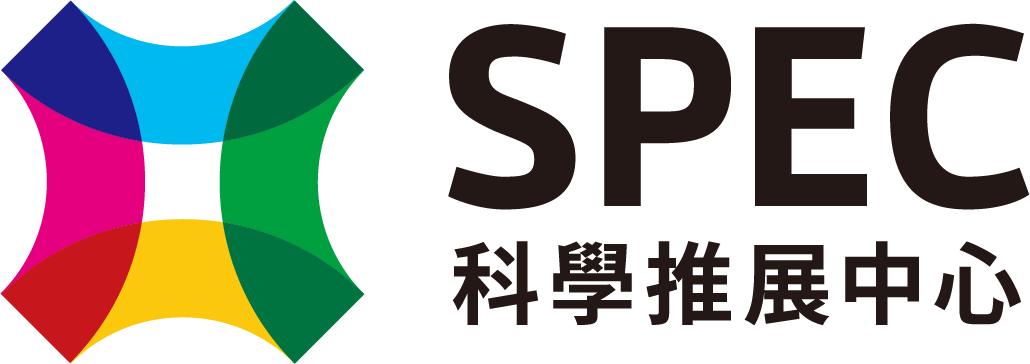The colorful Nobel Prize in Chemistry
Introduction by Professor Cheng-Ju, Yu from the Department of Physics and Chemistry
The 2023 Nobel Prize in Chemistry will be awarded to three chemists, Moungi G. Bawendi, Louis E. Brus, and Alexei I. Ekimov. We briefly describe the research work of award-winning chemists. Chemists Brus and Ekimov independently successfully created quantum dots in the early 1980s. In 1993, chemist Bawendi optimized the manufacturing method of quantum dots to improve the overall performance of quantum dots. Their outstanding works have substantially changed people's lives, and quantum dots can be applied to our lives. For example, some brands of displays use QLED technology, that is, quantum dot displays, which use quantum dots as the luminescent material of the display. Other applications of quantum dots include the development of solar cells and medical applications to label tumors. Quantum dots can be found everywhere, playing an essential role in the lives around us.
Quantum Dots (QDs) are a kind of chemical material. The difference from traditional materials lies in the element type and size. Its components are particles composed of certain elements in the periodic table, and the particle size is only between 1 to 10 nm (nm is the size unit, which means the size is only 10-9 meters), so we also call it the nanomaterials. Therefore, a quantum dot is a material with a feature of semiconductor nanostructure, and the nanostructured material has a quantum confinement effect. It means the electrons of quantum dots are quantized at the energy level and form an energy gap (Band Gap) instead of a continuous energy level. Based on quantum mechanics, by changing the particle size of the quantum dot material, the scale of the energy gap of the QDs can be modified and further adjusted to emit different light. Various quantum dots that emit versatile light are currently available on the market. (shown in the following figure)
Introduction by Professor Cheng-Ju, Yu from the Department of Physics and Chemistry
The 2023 Nobel Prize in Chemistry will be awarded to three chemists, Moungi G. Bawendi, Louis E. Brus, and Alexei I. Ekimov. We briefly describe the research work of award-winning chemists. Chemists Brus and Ekimov independently successfully created quantum dots in the early 1980s. In 1993, chemist Bawendi optimized the manufacturing method of quantum dots to improve the overall performance of quantum dots. Their outstanding works have substantially changed people's lives, and quantum dots can be applied to our lives. For example, some brands of displays use QLED technology, that is, quantum dot displays, which use quantum dots as the luminescent material of the display. Other applications of quantum dots include the development of solar cells and medical applications to label tumors. Quantum dots can be found everywhere, playing an essential role in the lives around us.
Quantum Dots (QDs) are a kind of chemical material. The difference from traditional materials lies in the element type and size. Its components are particles composed of certain elements in the periodic table, and the particle size is only between 1 to 10 nm (nm is the size unit, which means the size is only 10-9 meters), so we also call it the nanomaterials. Therefore, a quantum dot is a material with a feature of semiconductor nanostructure, and the nanostructured material has a quantum confinement effect. It means the electrons of quantum dots are quantized at the energy level and form an energy gap (Band Gap) instead of a continuous energy level. Based on quantum mechanics, by changing the particle size of the quantum dot material, the scale of the energy gap of the QDs can be modified and further adjusted to emit different light. Various quantum dots that emit versatile light are currently available on the market. (shown in the following figure)

Figure 1. Various quantum dot materials emit different light2.
The unique physical properties of quantum dots were actually predicted by physicist Herbert Frohlich as early as 1937, but constituting quantum dot materials can be achieved through chemical synthesis methods. First of all, the preparation method of quantum dot materials can be achieved through the theory of chemical synthesis (nucleation-crystallization theory). Chemists are already very experienced in knowing how to control the size of particles in the solution system so that the overall size of the material falls within the degree of nanometers. Furthermore, typical quantum dots include main group elements IIB-VIA or IVA-VIA in the periodic table, such as cadmium selenide quantum dots (CdSe), lead sulfide quantum dots (PbS), etc. Although the quantum dots have the advantages of highly bright light and more stability, the presence of heavy metal elements will cause subsequent environmental pollution problems. Other environmentally friendly quantum dot synthesis methods, such as the IIIA-VA family (Indium phosphide, InP), have been released. Since the nanomaterial composition does not contain highly toxic heavy metals, it has the potential for development in the future. In recent years, cadmium-free quantum dots technology has become the leading role in courtroom battles over technology patents. Major manufacturers worldwide are investing in the future direction of the circular economy, hoping to be the first to occupy the non-toxic, low-pollution technology in the market. The advantage of quantum dot materials is that in the future, carbon quantum dots (CQDs) and silicon quantum dots (SiQDs) may also become battlegrounds for the next generation of industrial strategists.
Quantum dot materials are artificial materials based on physics and realized by chemical synthesis methods. These nanomaterials have high value in commercialization and have improved human life. Therefore, it is well-deserved that quantum dot materials were awarded the Nobel Prize in Chemistry in 2023. It has considerable applications in various fields, such as QLED technology, solar cells, and biological imaging in biomedicine, laser technology, drug delivery technology, and even quantum computers where quantum dots can be used to create quantum bits. It can be seen that quantum dot materials have high application value in electronics, biology, and medicine.
Suppose you want to have a more in-depth understanding of the quantum dots. In that case, you can refer to the following relevant reports from the Royal Society of Chemistry (RSC)2,3 and other Taiwanese scholars ' introduction to this chemistry award (Professor Yeun-Min, Tsai in National Taiwan University)4.
Quantum dot materials are artificial materials based on physics and realized by chemical synthesis methods. These nanomaterials have high value in commercialization and have improved human life. Therefore, it is well-deserved that quantum dot materials were awarded the Nobel Prize in Chemistry in 2023. It has considerable applications in various fields, such as QLED technology, solar cells, and biological imaging in biomedicine, laser technology, drug delivery technology, and even quantum computers where quantum dots can be used to create quantum bits. It can be seen that quantum dot materials have high application value in electronics, biology, and medicine.
Suppose you want to have a more in-depth understanding of the quantum dots. In that case, you can refer to the following relevant reports from the Royal Society of Chemistry (RSC)2,3 and other Taiwanese scholars ' introduction to this chemistry award (Professor Yeun-Min, Tsai in National Taiwan University)4.
References:
1. https://www.nobelprize.org/prizes/chemistry/
2. https://www.chemistryworld.com/news/quantum-dots-and-a-bright-future/3008136.article
3. https://www.chemistryworld.com/news/2023-nobel-prize-in-chemistry-goes-to-trio-behind-quantum-dots/4018166.article
4. https://teaching.ch.ntu.edu.tw/nobel/2023?fbclid=IwAR1RCCZDbOROwC_e38XBOiDzcJ2iYl5Hu0Donuc9gt1S104HAOWt-fp6WWU_aem_AYu5JOonnZDE1C__1pbC2M_AVX6WwCxV_ih-Z93FJPRyzuTGTkKD-ad7uXyw4bItkDA&mibextid=Zxz2cZ
https://www.youtube.com/watch?v=vpph2cHx6gk
Source of information:
https://www.nobelprize.org/uploads/2023/10/advanced-chemistryprize2023.pdf








